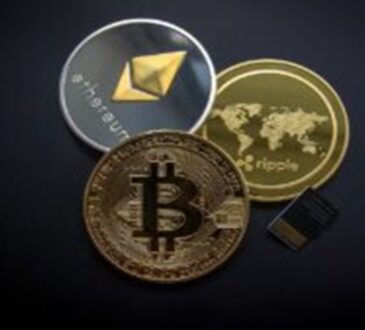Here’s when the price of gold could hit $5,000 per ounce, according to experts

PeilingLeeCopyright/Getty Images
The price of gold has more than doubled since the start of 2024. The precious metal was trading around $2,000 per ounce at the start of last year, and recently crossed the $4,000 mark before surging to above $4,300 per ounce— a level that seemed distant just months ago.
While the price has moderated somewhat in the time since, price upticks will likely continue to occur, at least in the near future, as today’s economic climate makes gold a smart bet for a lot of investors. And, not only has there been aggressive buying by central banks, but issues like high inflation and currency instability are also driving individual investors to hedge and diversify with gold.
The next price milestone investors are watching is $5,000 per ounce, as gold’s recent momentum helps that target look achievable. The question is what needs to happen economically to get it there — and how soon it may occur.
Find out how you can use gold to help diversify and protect your portfolio today.
Here’s when the price of gold could hit $5,000 per ounce, according to experts
Brandon Aversano, CEO of precious metals buyer The Alloy Market, puts the timeline for gold to hit the $5,000 per ounce price point at 18 to 24 months.
“It’s not a matter of if, it’s when,” Aversano says, noting that the key drivers are already in motion.
That timeframe assumes current economic trends continue at their present pace. But if economic conditions worsen quickly, the move could happen much faster.
Ben Nadelstein, head of content at gold yield marketplace Monetary Metals, says gold could reach $5,000 within 12 months “if we see negative real yields, a clear policy shift toward easier financial conditions, a weaker dollar, firm central bank demand and sustained geopolitical risk.”
Recent price action suggests even those timelines might be conservative. Just a month ago, gold was trading below $3,700 per ounce. Today it’s over $4,000.
“Gold is only about 20% off from reaching $5,000, and gold just moved almost 30% in three months,” says Brett Elliott, director of marketing at American Precious Metals Exchange (APMEX). Given that momentum, Elliott thinks all bets are off.
The path gold takes to $5,000 per ounce, though, will depend on the economic catalysts and how forcefully they move markets.
Explore the benefits of gold investing and add the precious metal to your portfolio now.
What needs to happen for gold to reach $5,000 per ounce?
There are a few economic factors that could push gold prices to $5,000, experts say, including:
Federal Reserve policy shifts
The Fed has already started cutting rates and winding down quantitative tightening.
“If the Fed signals it’s done fighting inflation while debt keeps climbing, gold will move sharply higher,” says Aversano.
Geopolitical instability
Wars, trade disputes or financial crises can all drive investors toward safe-haven assets like gold. And, as Aversano points out, gold is already near record highs without any major crisis.
“It wouldn’t take much more pressure to push it over the edge,” he says.
Declining confidence in fiat currency
With deficits around 6% and debt climbing, investors are questioning whether traditional currencies can hold their value.
The government is “only going to make matters worse as they continue to debase the currency, which adds to gold’s floor on a fundamental level,” Elliott says.
Financial system instability
Bank failures or financial scares increase demand for high-quality collateral like gold. Nadelstein says renewed liquidity support for weak financial institutions or credible stability concerns could be major catalysts.
Inflation tolerance
If policymakers become more accepting of elevated inflation, it would signal a shift toward easier financial conditions, according to Nadelstein. Historically, this kind of environment benefits gold prices.
Could investing in alternatives like silver pay off right now?
For investors who feel priced out of gold at current levels, alternative metals, like silver, can offer several advantages, including:
- Lower entry point: Silver provides similar inflation protections as gold but at a lower cost, according to Aversano.
- Dual demand sources: “Silver can help diversify a portfolio because it has both monetary and industrial demand,” Nadelstein says. This can make it more resilient across different economic conditions.
- Bigger percentage gains: “Silver is still undervalued relative to gold and it tends to move later in the cycle,” notes Aversano. “Historically, its upside percentage moves are bigger once the momentum starts.”
- Supply constraints: Elliott points to six years of supply deficits, high lease rates and regional inventory dislocations as factors that could support higher silver prices ahead.
The bottom line
Gold may reach $5,000 in the next year, but it could also take longer. Investors have a few ways to gain exposure now, though, if they want to capitalize on the possibility of future gold price increases. Physical gold bars and coins, gold exchange-traded funds (ETFs) and gold mining stocks are all options, but it’s important to weigh the benefits and downsides of each option before investing. “Each form of investment has its own properties, advantages and risks that make it suitable for different investment goals,” Elliott emphasizes.




